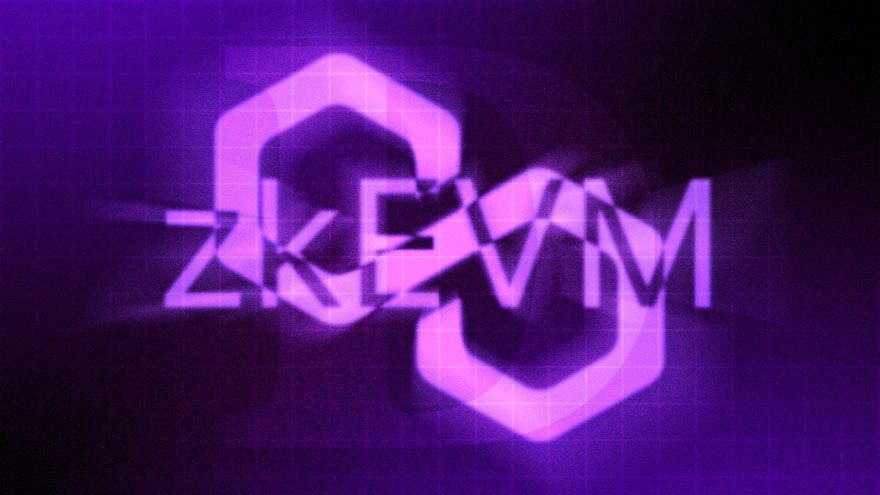Polygon, a leading Ethereum scaling team, plans to unify its PoS sidechain and zkEVM Layer 2 as part of its Polygon 2.0 overhaul.
Unifying the two blockchains would create the third-largest Layer 2 network with nearly $1B in total value locked. While the PoS Chain hosts the lion’s share of Polygon TVL, zkEVM offers improved performance and security guarantees over its older sibling.
“In Polygon 2.0, users on both chains would be able to interact and transact seamlessly, securely, and without bridging back to Ethereum,” Polygon said in an announcement.
Polygon’s MATIC token is down by around 30% in the past month, with the majority of losses coming after the SEC claimed the digital asset is an unregistered security.

Polygon 2.0
The move follows Polygon releasing its 2.0 roadmap in mid-June, describing a multi-chain ecosystem comprising zero-knowledge (ZK) powered scaling solutions.
Polygon allocated $1B to investing in zero-knowledge technologies in 2021. In addition to launching its zkEVM in March, Polygon also deployed the mainnet beta for its hybrid ZK and optimistic rollup, Nightfall, last May and continues to develop Miden, a ZK-STARK-based L2.
Engineers also published a proposal to convert the Polygon PoS sidechain into a Layer 2 zkEVM validium last week.
A validium is a scaling solution that operates like a roll-up, except that transaction data is stored off-chain. A zkEVM is a network secured by zero-knowledge proofs that supports code written for the Ethereum Virtual Machine (EVM). If approved, the conversion could take place in Q1 2024.
Polygon’s plan to unify its PoS Chain and zkEVM Layer 2 is also contingent on the proposal passing.
Cross-Chain Infrastructure
Polygon seeks to leverage the theoretically limitless scalability gains offered by a multi-chain architecture without suffering from the liquidity fragmentation that existing ecosystems experience.
The Polygon 2.0 tech stack offers shared infrastructure for all ecosystem chains to provide a user experience akin to that of a single chain, including a cross-chain bridge and staking layer. The bridge uses a hybrid design combining optimistic confirmations for instant transactions between Polygon 2.0 chains and ZK proofs for mainnet finalization.
Native Restaking
Polygon 2.0 will also introduce a shared staking layer to facilitate restaking for ecosystem chains.
Restaking will allow MATIC stakers to validate multiple Polygon 2.0 chains using a single node, potentially offering increased rewards to stakers. Polygon said it would detail revamped tokenomics during the week of July 10.
“The Polygon 2.0 architecture solves a problem existential to all blockchain design: How to securely add capacity and blockspace to meet demand, while also preserving a user experience that feels like using a single chain,” Polygon said.
PankcakeSwap Launches On zkEVM
On June 29, PancakeSwap, a leading decentralized exchange, launched on Polygon zkEVM.
PancakeSwap is the third-ranked DEX by daily volume behind Uniswap and Dodo with $87.6M, according to CoinGecko. PancakeSwap is also the 12th largest DeFi protocol, with more than $1.5B in TVL.
The launch marks PancakeSwap’s fourth deployment after BNB Chain, Ethereum, and Aptos.
Read More: thedefiant.io









 cETH
cETH  io.net
io.net  SWFTCOIN
SWFTCOIN  Ontology
Ontology  COTI
COTI  LCX
LCX  Melania Meme
Melania Meme  SKALE
SKALE  TDCCP
TDCCP  Alchemist AI
Alchemist AI  BOOK OF MEME
BOOK OF MEME  BitDCA
BitDCA  VVS Finance
VVS Finance  Origin Ether
Origin Ether  Cookie DAO
Cookie DAO  Verasity
Verasity  Gamebitcoin Power
Gamebitcoin Power  Lift Dollar
Lift Dollar  Metaplex
Metaplex  Amnis Aptos
Amnis Aptos  Illuvium
Illuvium  ViciCoin
ViciCoin  Mythos
Mythos  Hivemapper
Hivemapper  Solar
Solar  Goatseus Maximus
Goatseus Maximus  Terra
Terra  Siren
Siren  Metis
Metis  Big Time
Big Time  Rekt
Rekt  Hive
Hive  Noble Dollar (USDN)
Noble Dollar (USDN)  Status
Status  Bio Protocol
Bio Protocol  Moonwell
Moonwell  Loopring
Loopring  Kamino
Kamino  Conscious Token
Conscious Token  Sophon
Sophon  Spiko US T-Bills Money Market Fund
Spiko US T-Bills Money Market Fund  TNQ
TNQ  Lorenzo stBTC
Lorenzo stBTC  Beets Staked Sonic
Beets Staked Sonic  Function ƒBTC
Function ƒBTC  sBTC
sBTC  Waves
Waves